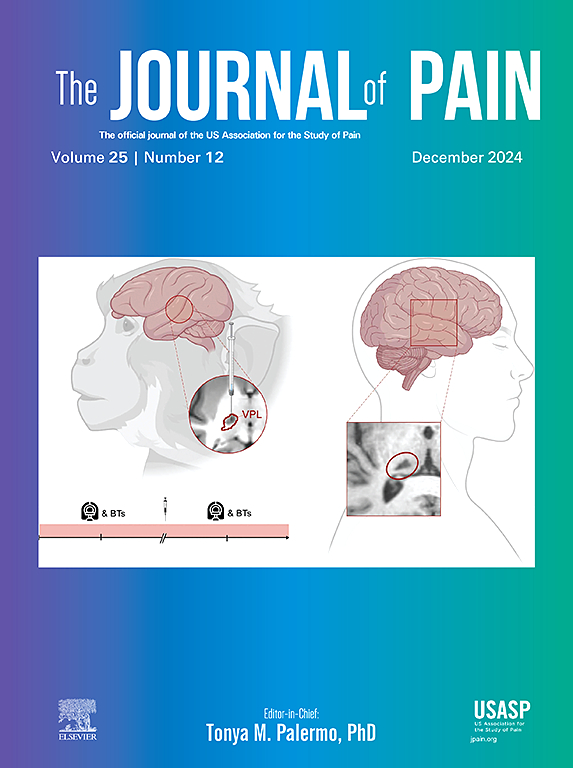Sex and age effects on chronic inflammatory pain development, maintenance, and resolution in Wistar rats
IF 4
2区 医学
Q1 CLINICAL NEUROLOGY
引用次数: 0
Abstract
Millions of Americans live with chronic inflammatory pain conditions, and the prevalence of these conditions increases with age and is higher in females. Still, it is poorly understood how sex, age and peripheral gene expression affect the trajectory of chronic inflammatory pain conditions. We used the inflammatory agent, Complete Freund’s Adjuvant (CFA), to systematically test sex and age effects on mechanical and thermal sensitivity in adolescent and adult male and female Wistar rats over 3 weeks (Experiment 1 [onset]) or 11 weeks (Experiment 2 [recovery]). We report that relative to male CFA rats, CFA females are mechanically hypersensitive at all time points and thermally hypersensitive at later time points (long-term during maintenance and recovery). Also, within CFA rats, more adult males (90%) achieved behavioral recovery at 11 weeks, relative to adolescent males (70%), adult females (70%) and adolescent females (50%). Behavioral recovery was most highly correlated with thermal nociception scores in most groups. Among adult males, significant positive correlations were seen between mechanical and thermal nociception scores and between scores in the CFA-injected and non-injected paws. In paw tissue from a subset of rats from experiment 2, we also report increased transient receptor potential cation channel subfamily V member 1 (TRPV1) gene expression in adult CFA but not adolescent CFA rats, and increased pro- and anti-inflammatory, and triglyceride synthesis-related gene expression in all CFA rats. Our results demonstrate apparent sex and age differences in the trajectory of chronic inflammatory pain-related behavior and gene expression in the affected paw of rats.
Perspective
This article highlights sex and age differences in the trajectory of chronic inflammatory pain and possible peripheral mechanisms driving recovery in Wistar rats. This data could be used to better understand recovery patterns in patients with this type of pain and provides a starting point for assessment of novel treatments.
求助全文
约1分钟内获得全文
求助全文
来源期刊

Journal of Pain
医学-临床神经学
CiteScore
6.30
自引率
7.50%
发文量
441
审稿时长
42 days
期刊介绍:
The Journal of Pain publishes original articles related to all aspects of pain, including clinical and basic research, patient care, education, and health policy. Articles selected for publication in the Journal are most commonly reports of original clinical research or reports of original basic research. In addition, invited critical reviews, including meta analyses of drugs for pain management, invited commentaries on reviews, and exceptional case studies are published in the Journal. The mission of the Journal is to improve the care of patients in pain by providing a forum for clinical researchers, basic scientists, clinicians, and other health professionals to publish original research.
 求助内容:
求助内容: 应助结果提醒方式:
应助结果提醒方式:


